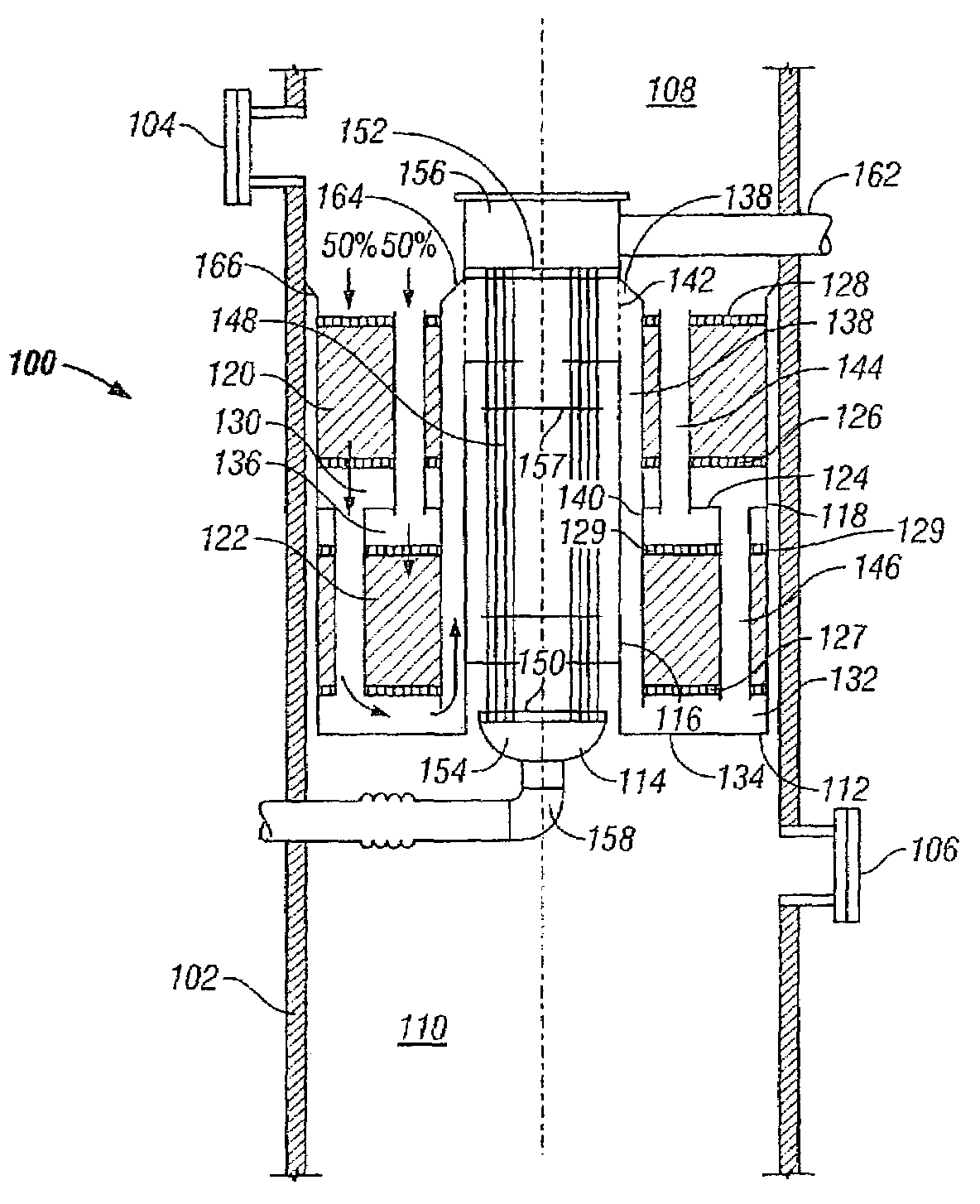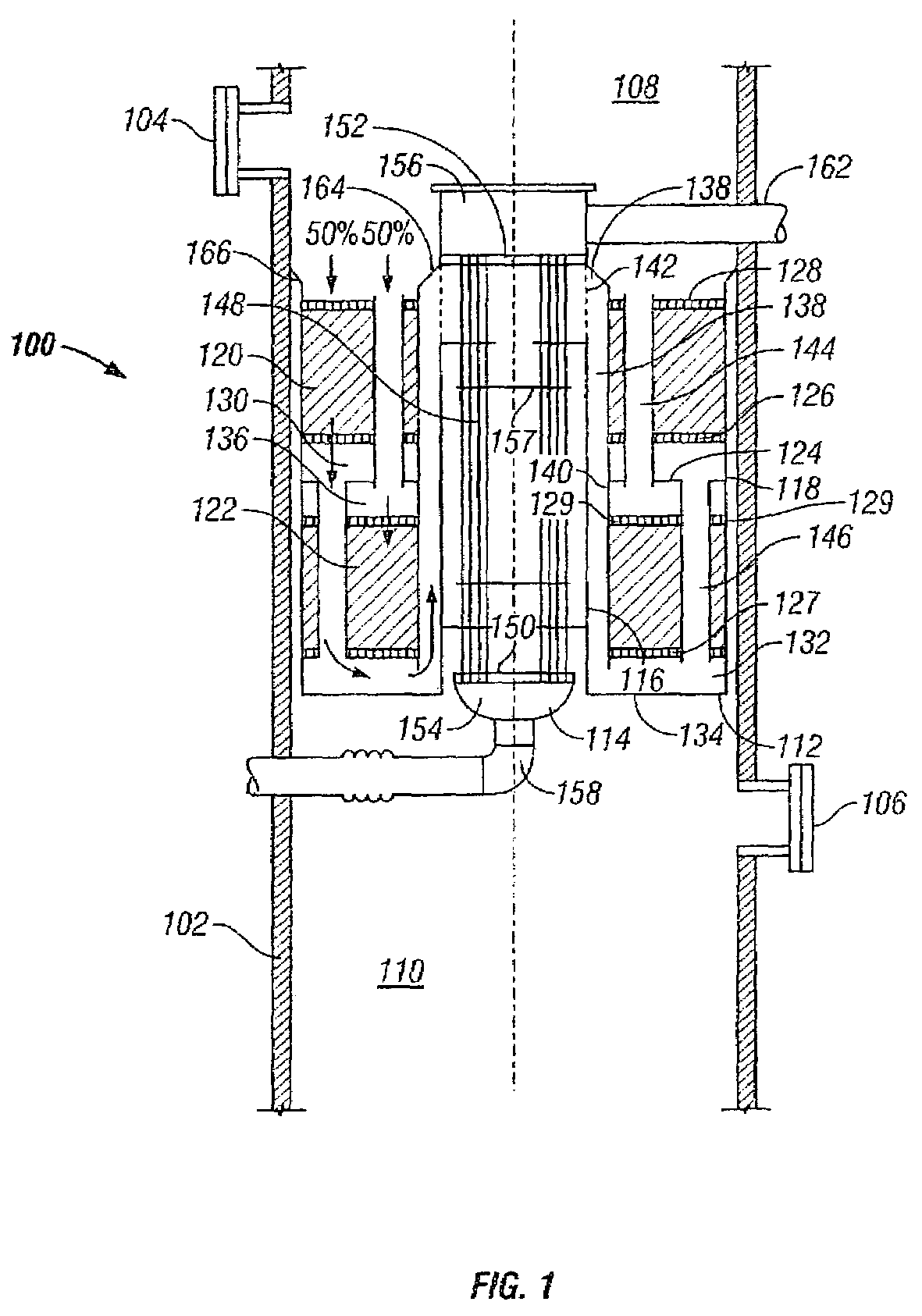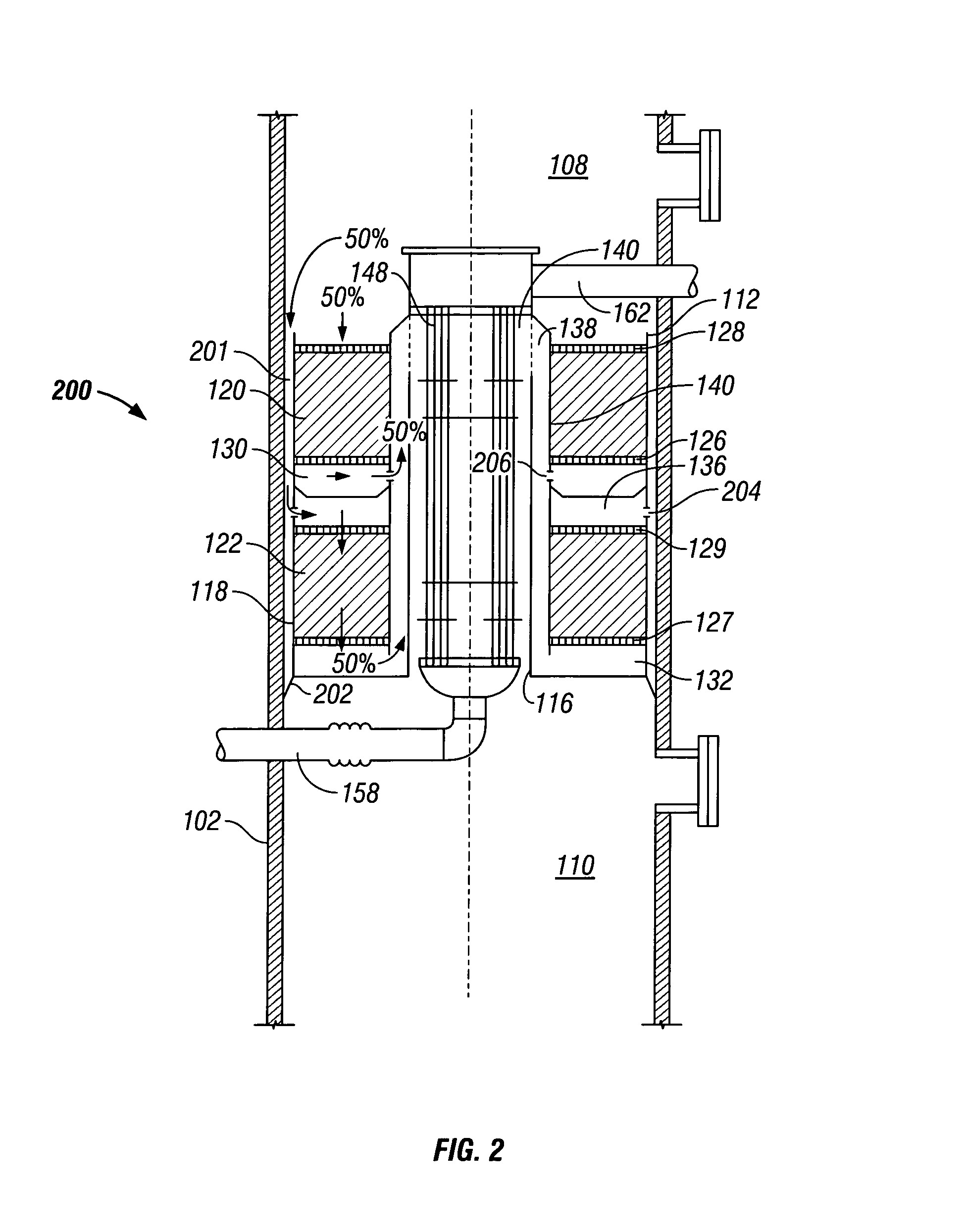Split-flow, vertical ammonia converter
a vertical ammonia converter and ammonia flow technology, applied in the field of ammonia converters, can solve the problems of ammonia converters that are complicated, the impact of the cost, and achieve the effects of reducing the size of the reactor, reducing the catalyst fluidization potential, and eliminating the ineffective catalyst volum
- Summary
- Abstract
- Description
- Claims
- Application Information
AI Technical Summary
Benefits of technology
Problems solved by technology
Method used
Image
Examples
Embodiment Construction
[0015]With reference to the drawings wherein the same reference numerals are used to refer to similar parts, FIG. 1 shows a catalyst zone 100 disposed within the vertical shell 102 of an ammonia converter according to one embodiment of the invention. Manways 104, 106 are provided for access at the respective gas inlet zone 108 and gas outlet zone 110.
[0016]A housing 112 is disposed concentrically about a shell-and-tube heat exchanger 114. The housing 112 has inner and outer concentric shrouds 116, 118. An intermediate shroud 140 is disposed outwardly of the inner shroud 116. The shrouds 118, 140 are disposed on either side of annular upper and lower catalyst volumes 120, 122. As used herein, the expression “catalyst volume” refers to the space intended to contain the ammonia conversion catalyst whether it actually contains the catalyst or has not yet been filled with catalyst. An annular partition plate 124 is disposed between the catalyst volumes 120, 122. Catalyst supports 126, 12...
PUM
| Property | Measurement | Unit |
|---|---|---|
| Length | aaaaa | aaaaa |
| Diameter | aaaaa | aaaaa |
| Volume | aaaaa | aaaaa |
Abstract
Description
Claims
Application Information
 Login to View More
Login to View More - R&D
- Intellectual Property
- Life Sciences
- Materials
- Tech Scout
- Unparalleled Data Quality
- Higher Quality Content
- 60% Fewer Hallucinations
Browse by: Latest US Patents, China's latest patents, Technical Efficacy Thesaurus, Application Domain, Technology Topic, Popular Technical Reports.
© 2025 PatSnap. All rights reserved.Legal|Privacy policy|Modern Slavery Act Transparency Statement|Sitemap|About US| Contact US: help@patsnap.com



